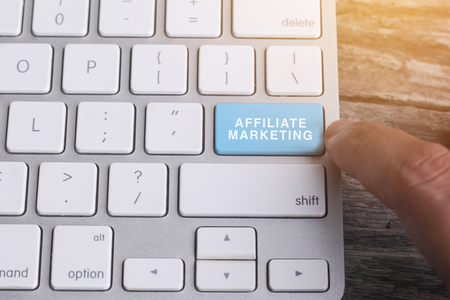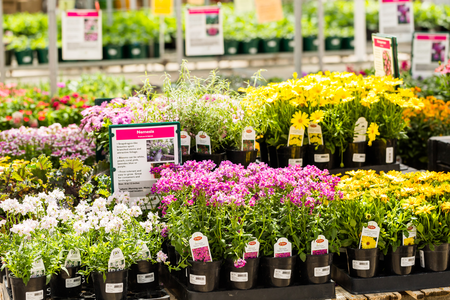From statistics to revenue: this is how you can use our free monthly marketing reports
One of the key priorities at Garden Connect is transparency about the work we do and how it improves your garden centre. We try to keep our contracts simple, and our products understandable.
Our monthly marketing reports are a good example of this. In this report, you can find valuable information about how your website, webshop, loyalty card and newsletters are performing.
One small problem is that the language of online marketers like us is often a bit different compared to the language you use in your garden centre.
How do the statistics in your monthly report translate to the real world and how can you use these reports to improve your business?
In this blog, we’ll break down the monthly report we’re sending out to all our customers.
One of the tables included in the report shows you a list of popular cities your website's visitors are located.
Search Engine Optimization
The first module that comes up is search engine optimization. This refers to the organic ranking of your garden centre on Google. Ranking refers to the place you appear when someone searches for something on Google. So a rank of 3 means that you come up as the third option in Google if someone searches for a specific term.
Improving your ranking is a great way to increase the visibility of your website or webshop but also takes quite a bit of work.
There are a lot of factors that go into the Google ranking system. This ranges from content on webpages to references in business directories to the number of websites that link to you and much more.
For a more in-depth guide feel free to check our blog to find our top 10 list of things you can do to improve your rankings.
Bounce rates
A second important metric for SEO (search engine optimization) is your bounce rate.
The bounce rate shows you the percentage of visitors who visit the website and immediately leave. There is not really an ideal number to strive for but generally, this should be between 30 and 50 percent. This, of course, depends on what sort of content is on the page. A location page will see a much higher bounce rate than a category page on a webshop.
Do you want to learn more about bounce rates and how they affect your website? Have a look at this blog post.
There are two main reasons customers might bounce, either because they are looking for something you don’t sell or they are looking for something you do show or sell but they can’t find it.
The first type is bounce is fine, you can’t be relevant to all the people all the time. The second type should be avoided. The main way to do this is by increasing the user-friendliness of your website. This means featuring the most important parts of your website clearly (e.g. in the top menu and also in blocks on the front page) and adhering to the most common website standards. No customers will look for their shopping cart in the footer!
Sometimes small changes go a long way. A common example of this is adding other news items under the current one so visitors can easily click through to new items instead of closing the website or having to go back. This is how Fernhill is applying this trick to lower the bounce rate:
Webshop
You most likely don’t need our reports to tell you how much revenue the webshop has been pulling but there also additional important factors that indicate how a webshop is doing.
Order status shows the number of orders completed compared to the number abandoned.
Customers not completing their orders is a huge missed opportunity. The root cause is often trust. If the customers do not trust the webshop they are unlikely to go through with payment. Trust takes time to earn but there are a few shortcuts.
Adding references and reviews is a good way to show that other people have had good experiences with your business. Adding several payment options also helps as the customer can choose whichever they feel most comfortable with. There are many more ways to make customers feel at ease but these are good places to start.
A webshop should also reflect your values as a company. If you pride yourself selling award-winning plants then only selling barbecues online might not go very well. If you manage to translate your in-shop identity to your webshop it might not be necessary to have the lowest prices. Read our in-depth article about the reason why customers abandon their shopping cart
Loyalty Card
What is better than a customer who buys a product from you? ... A customer who comes back to do it again!
This table shows the number of transactions made by your loyalty-card holders. The Covid-19 dip is clearly visible.
Loyal customers are important and they should be encouraged. Loyalty cards are a tried and true manner of showing appreciation for customers while also pulling in extra revenue. Important statistics to track for the loyalty card are the number of subscribers, the average spend, the number of inactive users and many more.
This graph shows you the percentage of inactive customers, peaking in June due to Covid-19.
The best way to improve your loyalty card metrics is to actively engage the customer. There are lots of creative campaigns out there waiting for you to think about. Maybe a special on garden hoses during a drought or an email to all inactive customers giving them a special deal on one weekend only. A trick to this is to think of the customer first. Trying to get rid of leftover stock is one thing, actively thinking about what the customer needs is another.
All in all activity and creativity are key. If your loyalty card is worth having more people will want it.
Digital Newsletters
Keeping your customers up to do date is an important part of any business. Letting your customers know about sales or when a special event is coming up or more recently what the new safety guidelines are is both a source of income and of customer trust. A great way to do this is through digital newsletters.
There are a few key metrics for newsletters you can find in our marketing reports. These are the number of subscribers, the number of sent emails per newsletter and the open rate. The first and last being the most important.
“How do I get more subscribers?” is a question we often hear. There are a number of ways to actively go about this. The most effective one is to turn it into a trade. The customer gives you their email address and permission and you give them a free cup of coffee or a small discount. Don’t forget that the process should also be as quick and easy as possible. Try to have a subscribe button in several places like the front page, the checkout and in your order confirmation emails.
Shows the total number of active email addresses.
The open rate is quality based. The more interesting your newsletter content the more people will want to read it. One way to find out what the customer is interested in is to give them the option to subscribe to different subjects (think of product categories). The Garden Connect Platform allows you to make groups which you can divide based on interest. This way you will be sending out more relevant information which might inspire subscribers with new garden ideas.
Lastly, as with loyalty cards, activity is important. Sending one newsletter a year is not going to be very effective. Building up a subscriber database and consistently sending out newsletters will have a great impact on your brand recognition and revenue.
For more ways to increase your subscriber number have a look at our blog which goes more into detail.
Larger than the sum of its parts
All of these concepts are of course part of a larger whole. There is no point in doing just one part very right. Ideally, all parts should be in place as they all influence each other. Having a greater number of visitors on the website will increase turnover through the webshop. A great webshop will pull in more potential loyalty cardholders and so on.
Our reports are there for you to keep track of which parts you’re great at and which could do with some love. All data is pulled from Analytics and your ePOS system to ensure maximum quality.
If you would like to learn more about the statistics we offer feel free to contact us as we are always ready to help: call +44 203 475 5541 or e-mail info@gardenconnect.com. Alternatively, feel free to ask us any questions via the comment box underneath.



